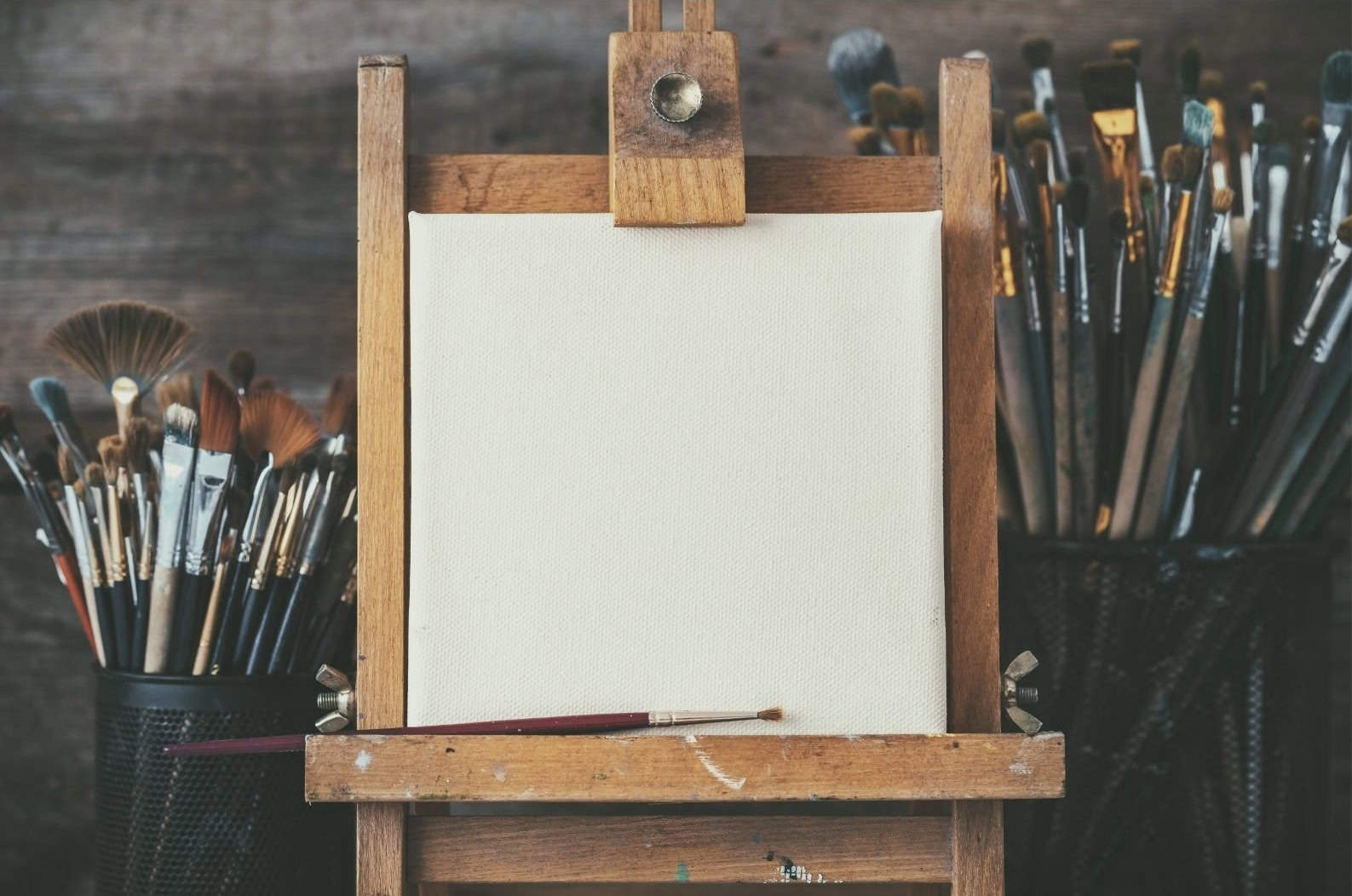Canvas has long been a favoured choice by artists for oil and acrylic painting. Since the 1700s, oil and acrylic painting on canvas in particular has been widely favoured as a painting surface over wood panel painting because of its affordability and ease of use.
Canvas
The word ‘canvas’ is derived from the Anglo-French word ‘canevaz’, a canvas for needlework, which is believed to have originated from the Greek word ‘cannabis’ meaning ‘made of hemp’. Modern canvases are made from cotton or linen, rather than hemp.
As a fabric, canvas is extremely durable and is plain-woven, giving it a different texture to other cotton-based fabrics such as denim, which is twill-woven. It is used primarily for making items such as tents, sails and bags, or for painting.
It is common for painting canvases to be stretched across a wooden frame or stretcher bars. The frame can often be adjusted as one paints, unlike other types of painting surfaces such as plastic and wood. Store-bought canvases come ready-stretched, with cardboard backings or wooden frames.
Read more: Should I Choose Wood or Canvas for my Painting Project?
10 Reasons to Paint on Canvas
1. They’re lightweight
Canvas makes for a lightweight painting surface, which means that it is easy to lift and transport. This is ideal for large paintings and landscape paintings that are done on-scene. The lightweight nature also makes them ideal for displaying, as they’re light enough to be hung on a wall with Command strips or a single nail in most cases.
2. They have an interesting texture
Canvas has a unique, woven texture that is easy to paint on. Other surfaces such as wood, ceramics and paper can have uneven textures that can be difficult to paint, but not canvas. Easy canvas painting is made even easier by the texture of canvas, which is generally even throughout. You can even buy canvases with different textures if you want to experiment.
The woven nature also means that incorporating other elements into your oil or acrylic painting on canvas (such as embroidery, beading or sequins) is relatively easy to do, and the absorbent nature of canvas gives the painting a great-looking finish.
3. They’re inexpensive
Canvases, in general, are fairly inexpensive, provided you get a standard size. A5, A4 and A3 canvases are commonly sold in art and stationery shops, some with a cardboard backing (which is brilliant for easy canvas painting) and some with stretcher bars or a wooden frame.
The cost of the canvas will depend on whether it is standard, irregular or adjustable. If you need a particularly uncommon size you may need to buy the frame and treated canvas separately, which can be more costly.
Canvases also vary in cost according to how tightly woven they are. Tightly-woven canvases are more expensive, and are designed for high-detail painting, whereas loosely-woven canvases are more affordable.
4. They don’t always require preparation
One of the great joys of working with canvas is how little preparation it needs. Other painting surfaces such as wood, plastic and glass need to be properly primed in preparation for paint, a process which may include sanding and sealing the surface.
With easy canvas painting, you’re ready to go from the moment you sit down to paint. It is recommended that you seal the oil or acrylic painting on canvas once you’re finished, for longevity, although a painting on canvas will still look beautiful without. (But if it is going to be a painting that you will want to keep for several years, then priming the canvas beforehand would be recommended!).
5. They’re rigid
The rigidity of canvas also makes it a great surface to paint on. However, if you’re doing acrylic painting on canvas using a paint pouring technique or using sand, you may want to strengthen it with a wooden or cardboard backing to prevent it from sinking in the middle.
6. They’re durable
Easy canvas painting really does stand the test of time. The earliest paintings on canvases were oil paintings painted in Belgium in the 13th Century, and some are still looking beautiful today! With added post-painting sealing and reinforced backings, canvas paintings can stand the test of time.
Another bonus, like most other painting surfaces, is that if you want to change the painting completely you can simply paint over the existing painting and start afresh.
7. They’re flexible
Canvas is a very flexible material, and as such it makes for a flexible painting surface. Canvas is commonly stretched out when painted, but it doesn’t have to be. Some artists choose to paint on canvas unstretched, then stretch it out afterwards (if at all).
Canvases also come in many shapes and sizes, meaning that you’ll always be able to find the perfect one for your project.
8. They don’t need framing
Another great aspect of oil or acrylic painting on canvas is the fact that, once dry, it’s ready to display immediately. No framing required! Easy canvas painting looks beautiful and simplistic against a plain wall, without any extra decoration or framing.
9. They come in a variety of thicknesses
Thicker canvases are generally more expensive than thinner ones, but are more durable. The fact that there are many thicknesses and thread densities (‘weights’) to choose from make them the perfect surface for painting.
10. They’re easy to use
Easy canvas painting is such common practice because canvases are easy to source, cheap to buy and easy to use, even for beginners. This is perhaps why they are a favourite of all artists, whether you’re just getting started out or you’re a seasoned professional.

